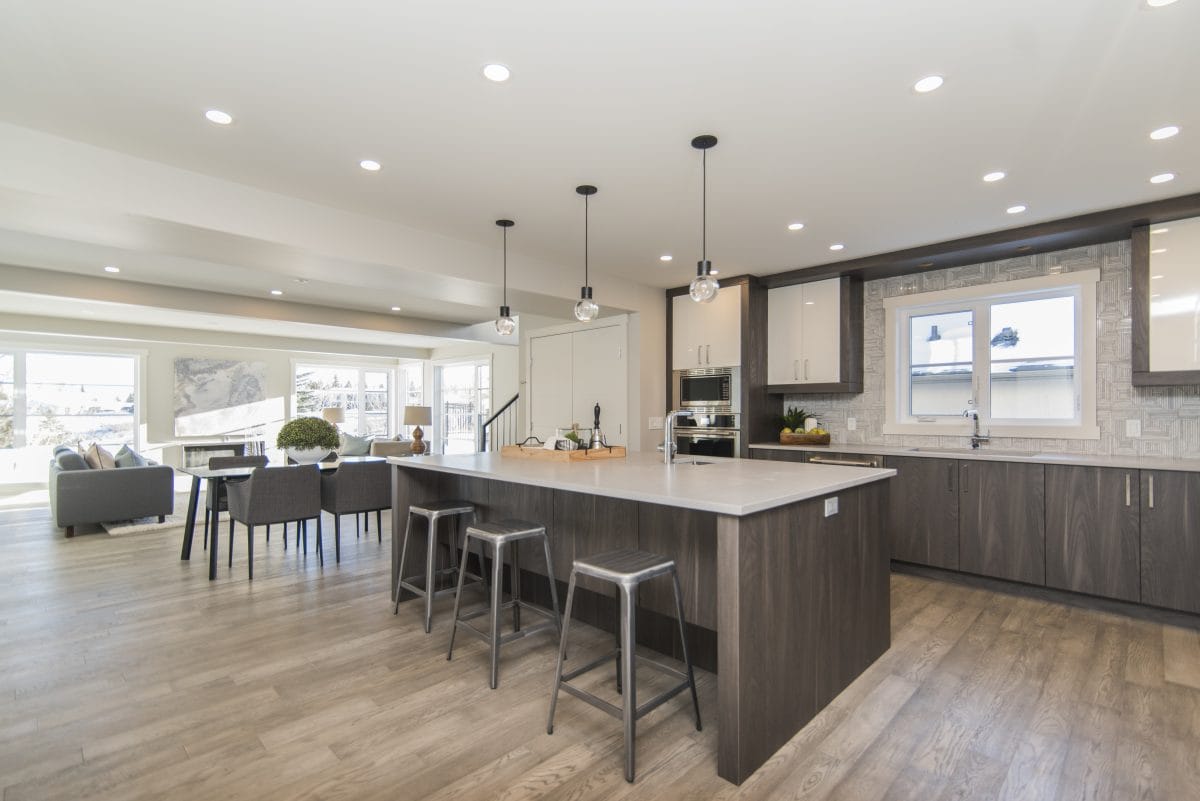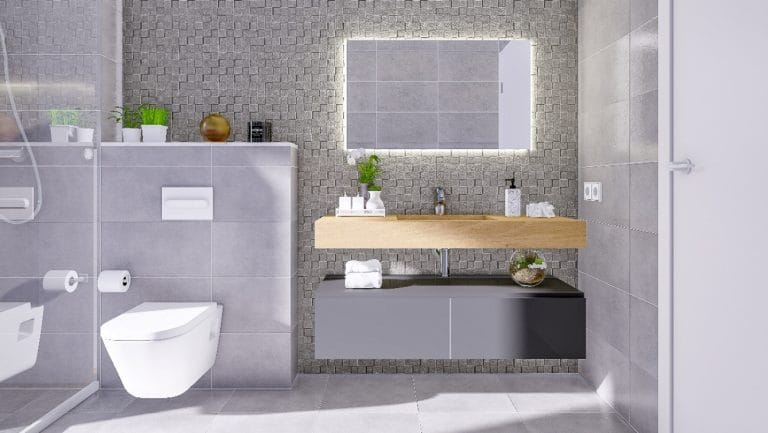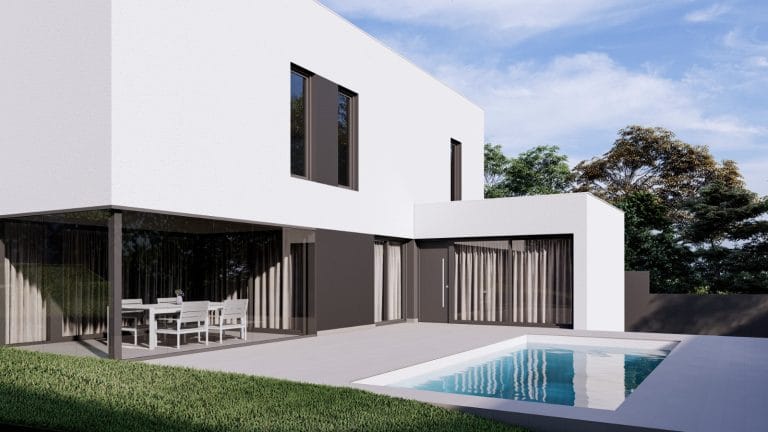Light is an essential element in the design and decoration of our home. It not only allows us to see better, but also influences our mood, our health and the perception of space. That is why it is important to make the most of natural light and choose the right artificial lighting for each room in the house.
In this article we are going to give you some tricks to get more light at home and what type of lighting to use in each room of the house, according to their functions and characteristics.
Tricks to get more light at home
To gain more light at home, the following ideas can be followed:
- Give way to the light with sliding doors, glazed and in white. This avoids interrupting the flow of light between the different rooms and creates a sense of spaciousness and continuity.
- Use white on walls or textiles, as it is the color that reflects the most light (up to 80%). White helps to create bright, clean and fresh spaces. You can also use other light or pastel tones, which bring warmth and softness. If you want to venture with a darker or more striking tone, it is important that you combine it with elements of light tones to keep the light in the room. For example, you can paint one of the walls of the room in a bold color, but offset it with light-toned furniture.
- Add complements with their own light. The idea is to use decorative elements that emit or reflect light, such as mirrors, candles, garlands, pictures with bright frames, etc. These complements help to create focal points of interest and to multiply the natural light.
- Use brighter floors. Dark floors absorb light and make the space look smaller and gloomy. Therefore, it is advisable to opt for light or bright floors, which reflect light and visually enlarge the space.
- Pay attention to the layout of the house, choosing large windows and eliminating walls and isolated spaces. The more open the floor plan of the house, the more natural light that enters through the windows will be used. You can also choose to install solar tubes or skylights on the roof, which allow you to illuminate areas without windows.
- Install white window frames. White or light-colored window frames make windows appear larger and allow more light to enter through them. They also contrast with the exterior and create an effect of depth.
- Avoid using translucent curtains. Opaque or heavy curtains block natural light and darken the room. Therefore, it is better to use light, vaporous and translucent curtains that allow light to pass through but also protect privacy and thermal comfort.
- Placing benches under windows. Benches under windows are a practical and decorative solution to take advantage of space and natural light. They can be used as seating, as storage or as a surface to place plants or books.
- Betting on warm light LEDs. LEDs are an efficient and ecological option to illuminate our house. In addition, we can choose the tone of light that we like, from a cold light to a warm light. Warm light is more cozy and relaxing, ideal for creating intimate and comfortable environments.
What type of lighting is best for each room in the house
The types of home lighting can be classified according to their use and origin:
- General lighting: It is the one that provides uniform and sufficient light for the entire space. It is usually placed on the ceiling or walls.
- Spot or focal lighting: It is the one that is directed to a specific point to highlight an object or an area. It is usually used with table lamps, floor lamps or recessed lighting.
- Ambient lighting: It is the one that creates a cozy and relaxing atmosphere with a soft and diffused light. It is usually used with candles, garlands or LED strips.
- Decorative lighting: It is the one that has an aesthetic value and is used to decorate or give personality to the space. It is usually used with designer lamps, colored or with original shapes.
Depending on the room of the house, we can use one or several types of lighting, combining them according to our needs and preferences. Here are some suggestions:
- Living room: The ideal is to illuminate the entire room with a general light not too intense, using ceiling lamps, ceiling lights or spotlights. We can also create an ambient light with wall sconces that throw the light beam towards the ceiling, achieving a pleasant and diffused light. The reading area and the dining room need spot lighting to complete, using table lamps, floor lamps or pendants. Finally, we can add decorative lighting with designer lamps that give personality and character to the space.
- Bedroom: To promote rest it is important that the light is not very intense or direct. In the bedside tables, a direct spot light with a table lamp or sconces, allowing us to read or watch TV without disturbing our partner. If there is a study or work area, the ideal is to combine a punctual and direct light on the table with another of ambient character. We can also use decorative lighting with candles, garlands or LED strips, which create a romantic and cozy atmosphere.
- Kitchen: In this room, the general lighting should be uniform, non-heating and energy efficient, such as fluorescent or LED panels. In the area where we will cook, the ideal is a direct light under the upper cabinets, allowing us to see well what we are doing without creating shadows. Inside the cabinets we can place strips and other battery-operated LED solutions that make it easier to find what we are looking for.
- Bathroom: In addition to a general lighting in the ceiling with ceiling or spotlights, it is important to have a specific lighting in the sink area that allows us to perform functional tasks accurately. For this, we can use sconces or spotlights in the mirror that do not create shadows on the face. If there is a differentiated space for the bathtub or shower, an ambient light will contribute to relaxation.
Now you know how to optimize the light in any room of your home. If you have a project in mind and want to make it a reality, do not hesitate to contact us. Our team of architects will be in charge of giving shape to your ideas and get the house you have been dreaming about for so long. It’s easier than you think, believe us!
Take a look at our projects and see for yourself if we are what you need! If you want more information about our services, don’t hesitate to contact us through the contact form on our websiteor by calling us at 877 60 40 06 or writing to us at the following e-mail address vadecasa@vadecasa.cat . I si quieres hacernos una visita y hablarlo en persona, do not hesitate to stop by our office in Tarragona. We will be happy to advise you. ¿Empezamos?



